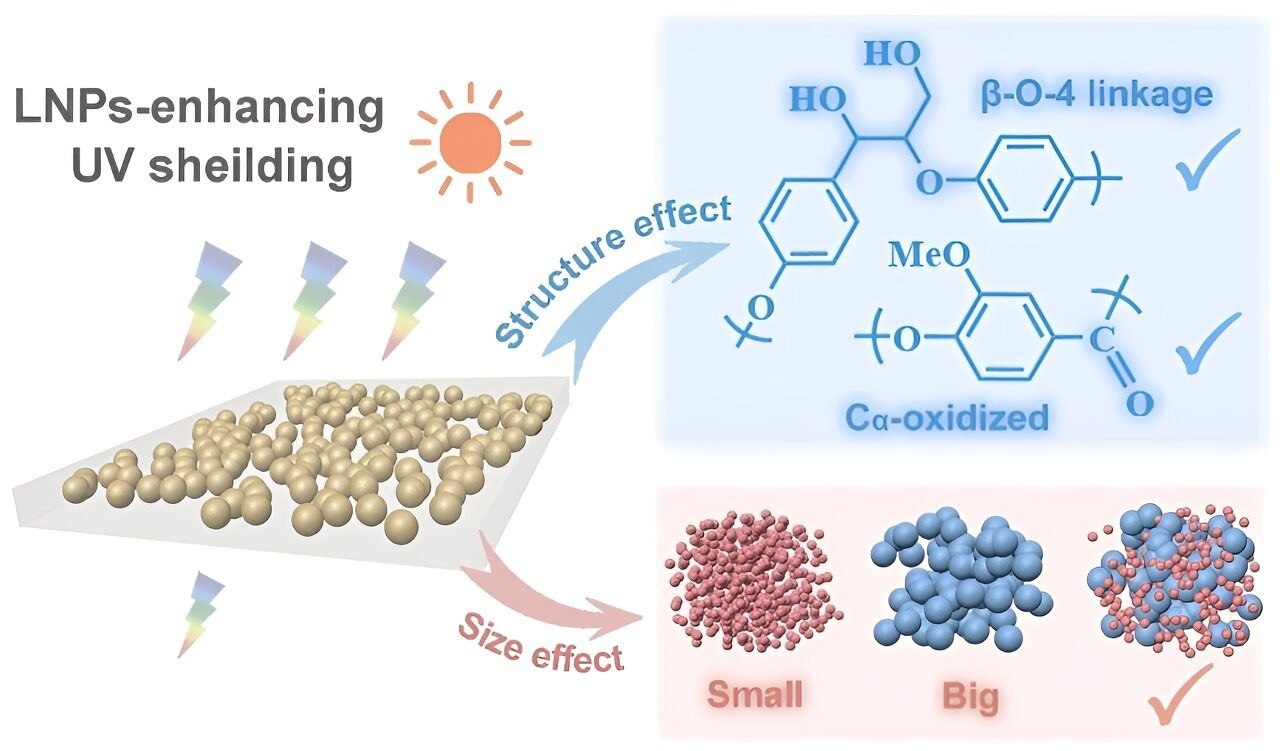When it comes to improving sun protection in cosmetics, lignin nanoparticles (LNPs) have shown great promise due to their enhanced UV-blocking properties compared to soluble lignin oligomers. In a study published in Carbon Resources Conversion, a team of researchers examined the interactions between LNPs’chemical structures and particle size distributions, shedding light on key factors affecting their efficacy in increasing sun protection factors (SPF) in sunscreens.
 The major mechanisms influencing the UV shielding performance of LNPs. Image Credit: Zhicheng Jiang, et al.
The major mechanisms influencing the UV shielding performance of LNPs. Image Credit: Zhicheng Jiang, et al.
Upon preparation into nanoparticles, lignin can synergistically enhance the UV shielding effect of composite materials when combined with other anti-UV agents, such as commercial sunscreens. When incorporated LNPs into sunscreens, they exhibit varied morphologies and exert distinct UV-blocking capabilities; however, modulating this UV shielding capacity is not straightforward, as it involves various factors including structure, particle size, and concentration, among others, affecting the shielding performance of the mixed sunscreen formulations post-LNPs incorporation.
Zhicheng Jiang, Study Co-Corresponding Author and Associate Professor, Sichuan University
The presence of a syringyl unit rich in the methoxyl group in the structures and compact LNPs with conjugating C=O and β-O-4 linkages were shown to be advantageous in increasing the UV resistance of the sunscreens.
Jiang added, “In sunscreen formulations, the simultaneous inclusion of large and small LNPs results in a state of disorder, which allows some particles to fill the gaps between them and adjacent particles, leading to a more compact LNP shield. Consequently, this enhances the UV-blocking capability of the mixture, rendering it significantly higher than sunscreen formulations containing LNPs with a uniform size distribution at the same concentration.”
Tianyu Liang, lead author of the study, added, “In the past, exploring the UV shielding mechanism of LNPs and consciously regulating them was a daunting task. This suggests that we can now identify effective approaches to intentionally modify their UV-blocking capacity, whether by altering the chemical structure of LNPs or regulating the distribution of LNP particle sizes.”
Liang concluded, “Furthermore, the study suggests that LNPs hold promise as natural-based materials for UV protection in sunscreen formulations and other cosmetic applications.”
Journal Reference:
Liang, T., et. al. (2024) New Insights into Greener Skin Healthcare Protection: Lignin nanoparticles as additives to develop natural-based sunscreens with high UV protection. Carbon Resources Conversion. doi:10.1016/j.crcon.2024.100227.